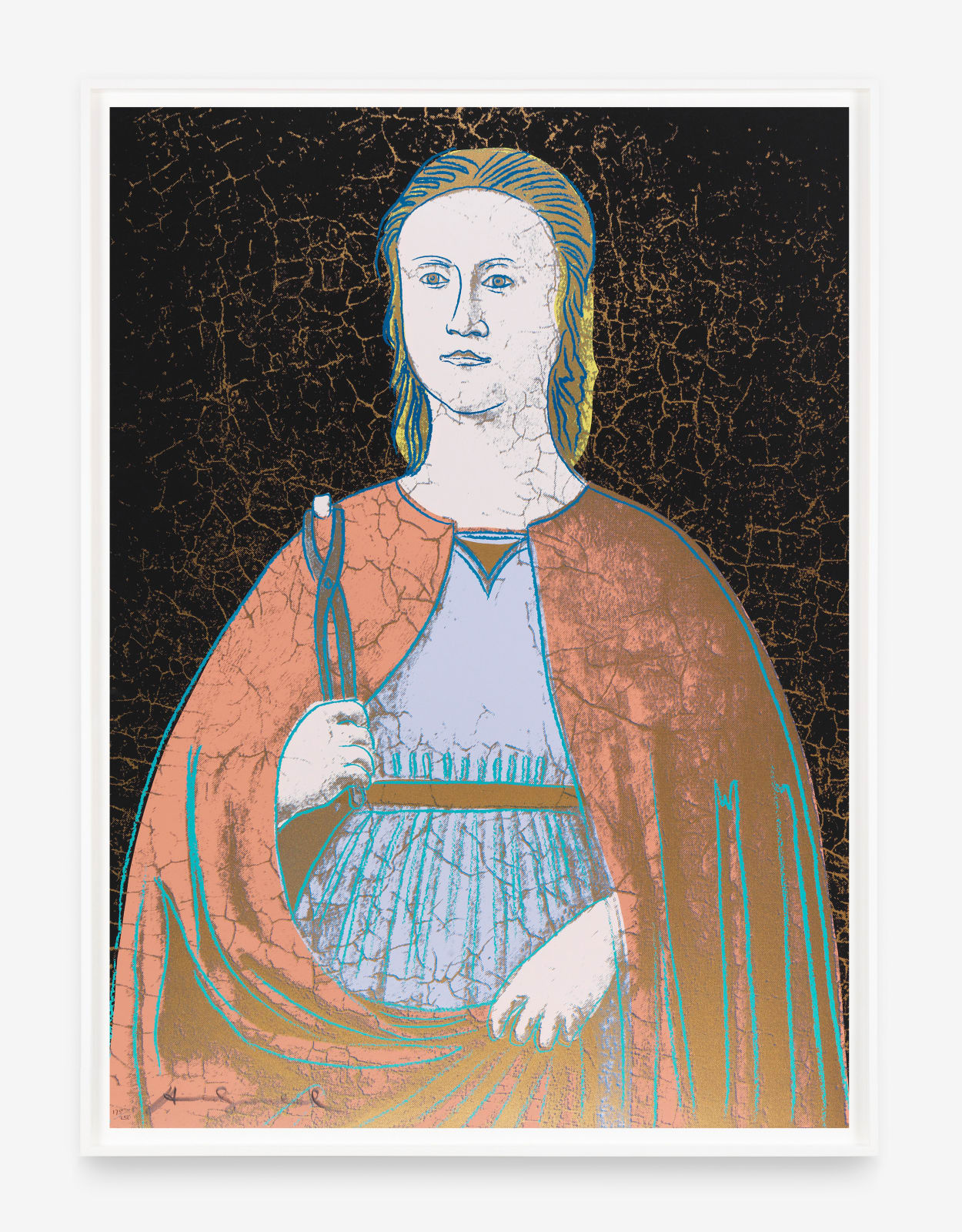Andy Warhol
Further images
Andy Warhol's 'Saint Apollonia,' completed in 1984, serves as a compelling intersection between his lifelong intrigue with art history's icons and the intimate connection with his Eastern European immigrant roots, set against the backdrop of his religious upbringing in the Byzantine Catholic tradition. This screenprint series reflects Warhol's personal and artistic evolution, a boy who absorbed the iconography of saints within the stained-glass windows and sacred frescoes of a Greek Orthodox Church in Pittsburgh, where his family, like many immigrant families, sought community and solace. The religious fervor and opulent imagery deeply impacted Warhol, imbuing him with a reverence for the spiritual potency of icons, which he later reimagined through the lens of pop art.
The subject of 'Saint Apollonia' – the patroness of dentistry, recognized by her iconography featuring pincers holding a tooth – draws from the contemplative panel painting by Piero della Francesca, a luminary of the Italian Renaissance. This work, located in the National Gallery of Art in Washington D.C., becomes through Warhol's hand a fusion of reverence and pop sensibility, a reinterpretation that places della Francesca's serene saint into the whirlwind of 20th-century aesthetics. By transplanting this sacred figure onto a screenprint on paper, Warhol forges a connection with his own spirituality and heritage, blending the lines between the immortal and the contemporary, between piety and commercialization.
In this series of screenprints, Warhol employs contrasting palettes to evoke distinct emotional landscapes. The first, with its celestial blues juxtaposed against a backdrop of earthly, cracking gold, speaks to the transitory nature of human suffering contrasted with the eternal. Meanwhile, the second rendition bathes the saint in a dark backdrop, underpinned by a warm, tactile ochre that together enshrine the figure in a tapestry of timelessness. The fractured texture reminiscent of cracked oil paintings, juxtaposed with the smoothness of Warhol's lines, creates a visual tension that both venerates the past and challenges its place within the modern tableau.
The appropriation of artistic imagery from the past, as exemplified by Warhol's 'Saint Apollonia,' has become a cornerstone of contemporary art, evolving well beyond Warhol's era into a nuanced dialogue about authenticity, originality, and the ownership of cultural artifacts. Contemporary artists, following in Warhol's footsteps, frequently engage with appropriation as a means to interrogate and celebrate the works of yesteryears, inviting audiences to question the value we assign to originality and the ways in which historical art informs, and is reshaped by, the present. This interplay is not merely a replication of forms; it is a symbiotic relationship wherein the old breathes new life into the new, and the new infuses the old with fresh perspectives and contexts. Through works like 'Saint Apollonia,' Warhol's legacy endures, his methodology a template for the reimagining of art's history within the ever-evolving narrative of contemporary practice.
NOTES
This artwork is signed and numbered 175/250 in pencil by the artist on the lower left margin.
Provenance
Private collection, BavariaPrivate collection, United States
Literature
Frayda Feldman and Jorg Schellmann, Andy Warhol Prints: A Catalogue Raisonne: 1962-1987. New York, D.A.P., 2003. Fourth edition. Catalogue Reference F&S II. 331 (another example illustrated in color)












